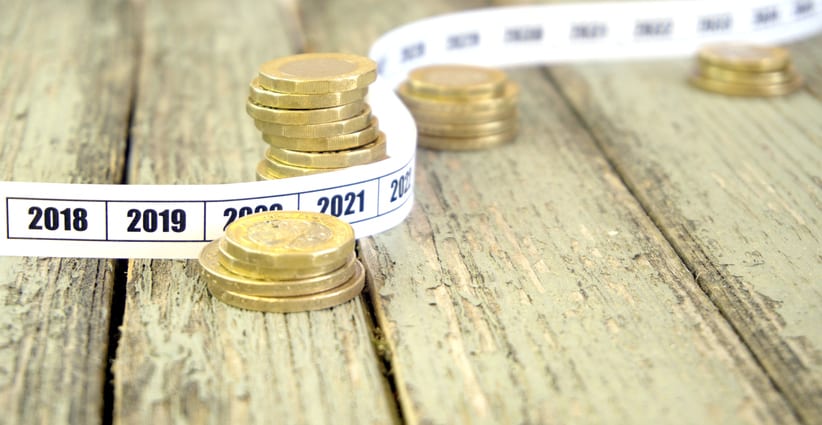Make the most of your pension allowance – or lose it
Planning for your retirement is one of the most important financial decisions you will make.
Get it right and you will be able to plan successfully for when you want to retire and what you can achieve in retirement. So, it’s important to think about the best way to maximise your potential retirement income while you are still earning.

Our approach to retirement planning will help you make the most of all your pension allowances so you can maximise your future income. Here are some of the areas we can advise you on:
Make the most of your Annual Allowance
You can pay up to 100% of your earnings or £40,000 (whichever is lower) into a private pension in any tax year and receive income tax relief at your highest rate on all your contributions. You can also carry forward any unused allowances for five years, as long as you had a pension scheme running during that period. After five years, if you haven’t used the allowance you carried over, you lose it.
This can be advantageous if you have earned more in a previous tax year, as any allowance carried forward from that year is based on those higher earnings and you could have paid more into a pension. If you want to put as much as possible into a pension to receive the tax relief, this means you should claim any allowance you carry over within five years. If you don’t, as each tax year passes you lose access to a year’s worth of relief. This is why, where possible it’s always a good idea to use it.
At the same time, you need to be aware of the drawbacks of paying too much into pension. In particular, if you exceed your Lifetime Allowance, this could lead to a substantial tax bill. Tax can be complex issue and there are some options that could help to mitigate this tax charge, so we’d strongly advise you to discuss your situation with one of our financial advisers.
Pay into a Pension even when you’re not working
If you put your career on hold for any length of time, you may not realise that you can still claim income tax relief on pension contributions of up to £3,600 per tax year.
However, if you don’t use this option in the tax year it’s available, you lose it. This not only means that you lose out on any potential growth in your savings, but as pensions grow, for the most part tax-free, you also lose the opportunity to invest in a largely tax-free fund.
Claim your tax relief
Tax relief on pension contributions works differently depending on whether you’re employed or self-employed. Here are two examples that highlight the differences.
Self-employed Joe
If you are self-employed, any amount you pay into a pension reduces your income. As this is subject to Schedule D income tax, it reduces your overall income tax by an equal amount.
For example, Joe is a self-employed landscape gardener earning £30,000 after expenses. After his full personal tax allowance of £12,570 (2021/2022 tax year), he’d pay 20% income tax on the difference of £17,430, creating a tax bill of £3,486 for the year. This means Joe’s net income after tax would be £26,514.
However, if he pays £5,000 into his pension, this reduces his taxable income to £25,000. After his full personal tax allowance of £12,570 (2021/2022 tax year), he pays 20% income tax on the difference of only £12,430, creating a reduced tax bill of £2,486. This means Joe’s net income after tax and paying £5,000 into his pension is £22,514 (£27,514 – £5,000).
All things considered, placing £5,000 into a pension has cost Joe only £4,000. The difference is tax relief!
Employed Katy
If you are employed and you choose to pay into your own personal pension, your payments would be paid net of basic rate income tax. Your pension provider will then recover your basic rate income tax relief from the Inland Revenue and add this to your pension pot. If you are a higher rate taxpayer, you can recover the difference between basic rate and higher rate tax relief by completing a Tax Return.
A simple example – Katy is employed and has her own personal pension, into which she pays £100 per month. As this is paid net of basic rate tax, Katy’s pension provider will recover 20% tax relief, grossing up her pension contribution to £125 per month. The £25 is purely tax relief.
Katy is also a higher rate tax payer, so she can recover a further 20% of £125 (higher rate less basic rate), which is an additional £25 per month. Over the course of the year, this means Katy can reduce the amount of income she pays higher rate tax on by £300.
If you are employed, your employer will normally offer you membership into a pension scheme and will normally add contributions on your behalf. This should always be your first consideration, before contributing to your own personal pension. In some cases, employers will deduct your pension contributions from your gross income before working out your income tax.
In both of these examples, despite tax relief working differently, it’s clear that tax relief is a major benefit to both Joe and Katy. Again, if they didn’t pay into a pension, they would lose this tax relief.
There are many other allowances available to you
There are many other possibilities when it comes to making the most of your personal allowances, such as reducing your liability to inheritance tax, or diversifying your investments to avoid going over your lifetime allowance.
The number of allowances available to you will depend on your personal circumstances, and there are potential traps you need to avoid. Consult one of our professional advisors and we will help you make the most of them.
We’ll help you to understand the benefits you could miss out on in the future and help you to make the most of them now by avoiding any of the pitfalls. Most of all, we will help you to develop a personal plan that meets your individual needs and takes your specific circumstances into account.
On Wednesday 28th of April, we are running a webinar ‘Tax Allowances, use them or lose them’, with HB Accountants. If you would lie to know more please click below:
At Grosvenor Wealth Management, we go out of our way to understand our clients’ personal needs and ambitions when they are planning for their future. Our independent and objective advice allows them to do just that.
To find out more about how we can support you through financial decisions and life planning, please contact us using this form.
Understanding fixed interest investing
Looking for a steady approach to building your portfolio? Bonds can provide stability and income [...]
Trump’s tariffs create turbulence in global markets
Remaining focused on established investment principles is essential The first quarter of 2025 has been [...]
Transferring wealth to the next generation
What to consider when planning your legacy Transferring wealth to the next generation is one [...]
The ‘secret’ to easing an Inheritance Tax burden
A practical solution to a challenge many families could face When planning your legacy, it’s [...]
Ten years of pension freedoms
Research reveals worrying trends among savers Ten years ago, pension freedoms revolutionised how people access [...]
Safeguarding investments in a volatile market
Planning for stability by diversifying your investment portfolio Diversifying your investment portfolio can feel like [...]







